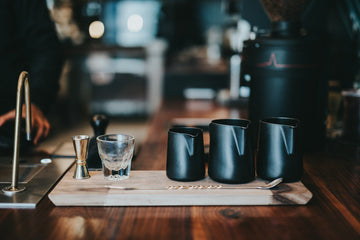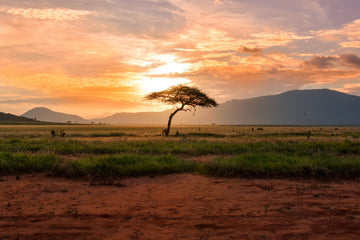French Press vs. AeroPress: Which brewing method is right for you?
Brewing a cup of coffee is not just a routine—it's a ritual. Two popular brewing methods among coffee lovers are the French Press and the AeroPress. Each one offers a unique way to extract flavors from coffee, and each has its own set of advantages.
French Press: The Classic Choice
The French Press, also known as a press pot or plunger pot, has been a favorite among coffee lovers for decades. It's a simple, time-tested method that requires only coarsely ground coffee, hot water, and a few minutes of your time.
The Process: To brew coffee in a French Press, you add coffee grounds to the pot, pour in hot water, and let it steep for about four minutes. Then, you press the plunger down, separating the grounds from the brewed coffee.
The Result: The French Press method results in a rich, full-bodied coffee with a robust flavor profile. It allows the oils and fine coffee particles to remain, contributing to the coffee's overall flavor and texture.
Pros and Cons: The French Press is straightforward to use and requires no special filters or pods—just coffee and water. However, it can be a bit challenging to clean, and the coffee it produces can sometimes contain sediment.
Check out our guide on how to make French Press coffee.
AeroPress: The Modern Innovator
The AeroPress is a relatively new addition to the coffee brewing scene, invented in 2005 by Alan Adler, the creator of the Aerobie flying ring. It's a unique brewing method that combines aspects of a French Press and espresso machine.
The Process: The AeroPress uses a combination of immersion and pressure to brew coffee. You place fine to medium-ground coffee in the brewing chamber, add hot water, stir, and then press the plunger through the chamber, forcing the water through a paper filter and into your cup.
The Result: Coffee brewed with an AeroPress tends to be smooth, rich, and less bitter, with lower acidity than French Press coffee. The paper filter removes most of the oils and fine particles, resulting in a cleaner cup with less sediment.
Pros and Cons: The AeroPress is compact, lightweight, and easy to clean, making it a favorite for travelers and campers. It also brews coffee quickly—usually in less than a minute. However, it requires special AeroPress filters and can only brew a small amount of coffee at a time (one to three cups, depending on the model).
If the AeroPress is of interest to you, take a look at our AeroPress Starter Bundle. It includes one AeroPress coffee maker (and all accessories) and 2, 12 oz. bags of coffee. You may also enjoy our AeroPress Brewing Guide.
Which One Is Right for You?
Choosing between a French Press and an AeroPress depends on your personal preferences and lifestyle. If you enjoy a bold, full-flavored coffee and don't mind a bit of sediment, the French Press may be for you. If you prefer a clean, smooth cup and appreciate a brewing method that's quick and portable, you might lean towards the AeroPress.
In the end, both the French Press and the AeroPress are capable of making a delicious cup of coffee. The best brewing method is the one that you enjoy the most and that fits seamlessly into your coffee ritual.
|
The Perfect Bean for Your Brew
While the brewing method is undoubtedly a key player in crafting the perfect cup of coffee, the type of coffee bean you use plays an equally pivotal role. Below are our recommendations for the best types of coffee beans to use when brewing with a French Press or AeroPress.
French Press Pairing
For the French Press, we recommend using medium to dark roasts. These roasts tend to have a robust flavor profile, which complements the rich, full-bodied characteristics of French Press coffee. Our favorite one is our Colombian Valle del Cauca. It has a silky medium body with a very savory character. Look for hints of cocoa, caramel, black cherry, and peach.
AeroPress Pairing
The AeroPress is a bit more flexible and can accommodate a wider range of roasts. Our favorite option is our Ethiopian East Harrar Abidir. In the cup, look for notes of dark chocolate and mild strawberry, followed by a rich, earthy finish.
Of course, we encourage you to experiment with different origins, roast levels, and grinds to find your perfect fit. After all, the best coffee is the one that suits your palate!



